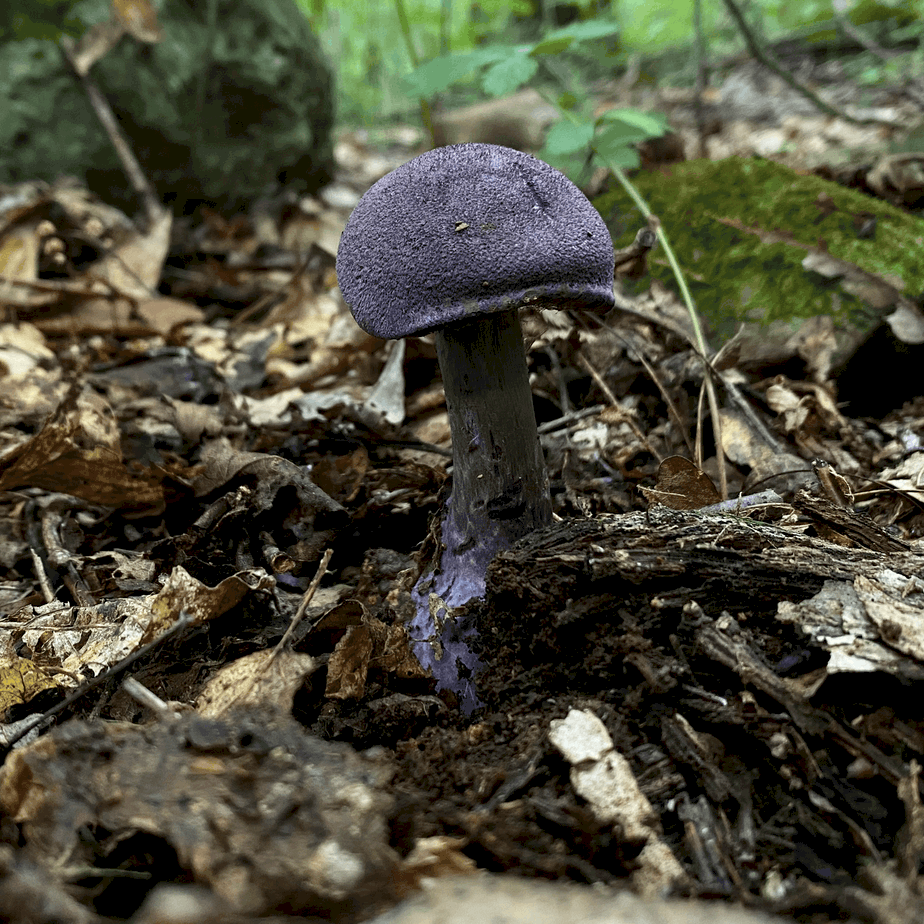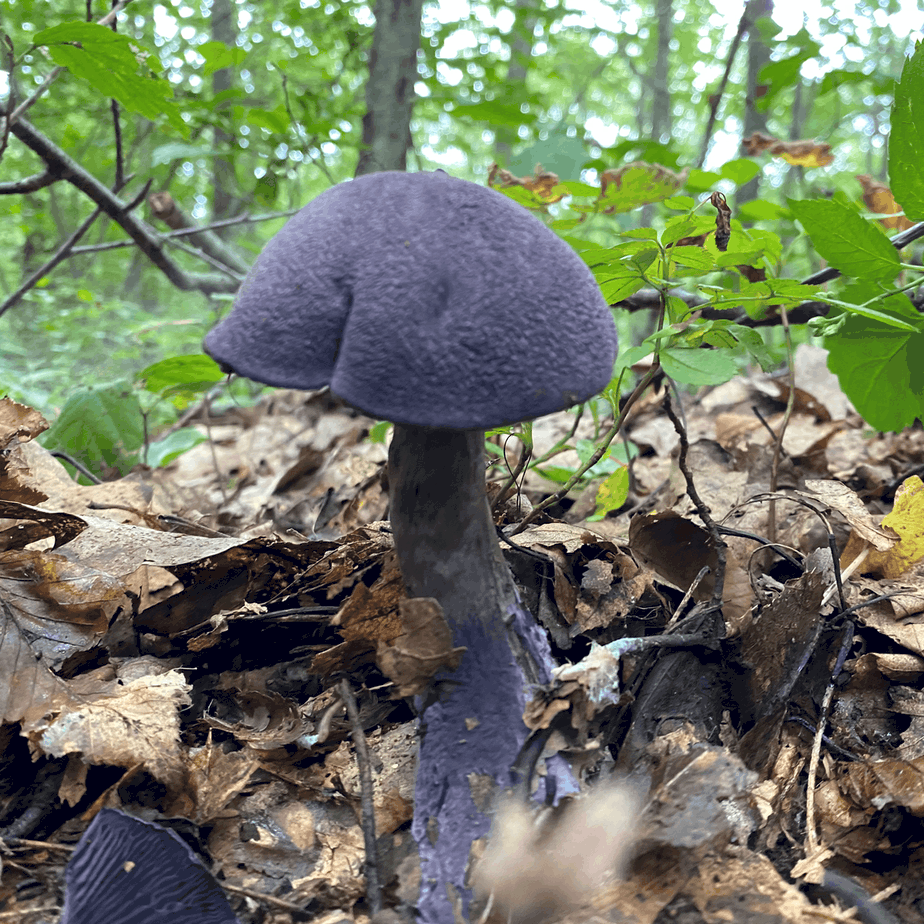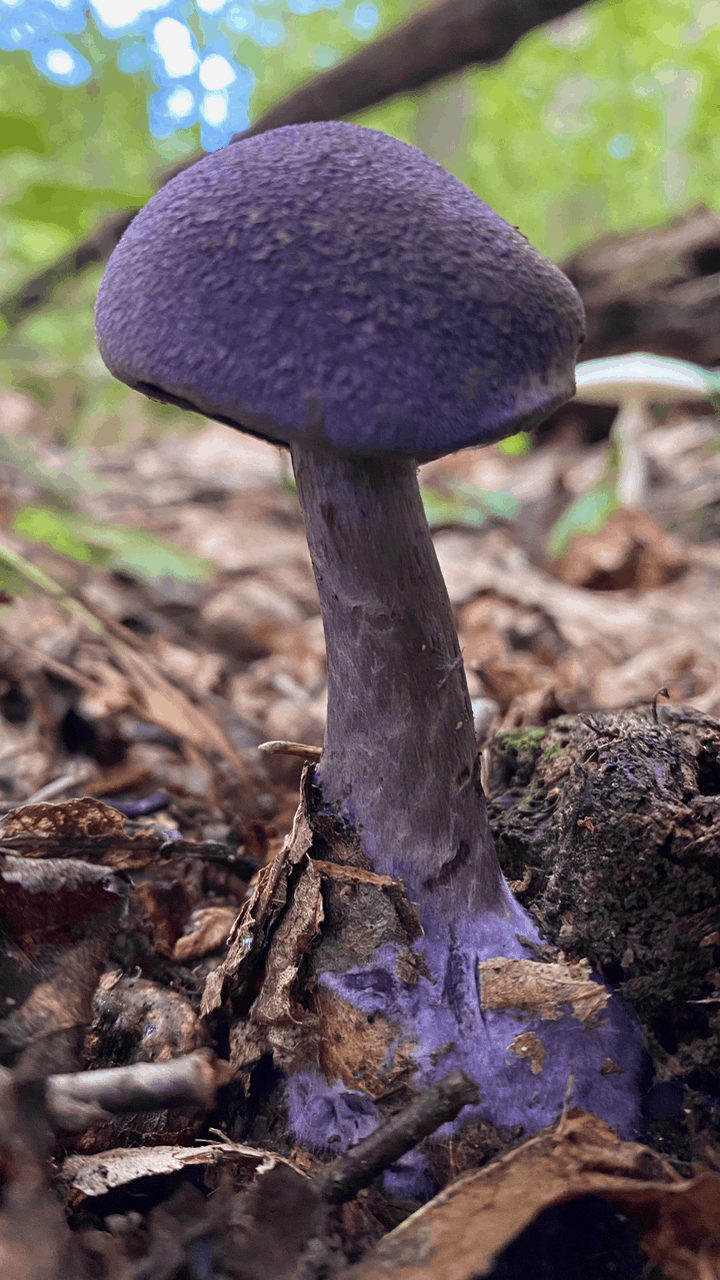Purple mushrooms are hard to find. The ones in these photos are Cortinarius violaceus (L.) Gray or Violet Webcap. Most fungi are shades of brown, orange, white, or red. I didn’t find these in Northern Virginia. They reside along the Piney Branch Trail in Shenandoah National Park. I am sure that this hardwood forest is old. I also saw another rare mushroom Amanita muscaria var. flavivolvata. Read on to find out more.
Disclaimer
I am not an expert at identifying fungi. Mushroom identification is very complicated. At times it requires a microscope. It surely requires a strong knowledge of mushroom characteristics. I would never say 100% that I have correctly identified a fungus.
Several mushrooms from the genus Cortinarius are poisonous. Some are lethal. Many cause tubulointerstitial nephritis. This causes inflammation in the kidneys. Toxicity symptoms are delayed. Therefore the best advice is to never eat wild mushrooms, unless you have an expert identify them. There is too much risk involved.
Characteristics of Cortinarius violaceus
Cortinarius violaceus is actually violet, purple, or a deep blue purple. They get darker with age. In short, some old ones maybe almost black. The ones in the photos looked different depending on the light. The entire mushroom is the same color.
The cap is convex, nearly flat, or slightly bell shaped. These are moderately convex. Caps are usually 4-16cm across. Information on cap size varies depending on the source. They are covered with dense fuzzy hairs or scales. Cap coverings vary with age and weather. Consequently, from my experience, they are not a reliable indicator.
The stem is the same color as the cap. It is club shaped at the base. The main stem is straight. It is a consistent diameter from base to cap.
Gills are similarly colored to the rest of the mushroom; however, they may turn darker or black sooner.
I do not edit colors in my photos.
Two Varieties of Cortinarius violaceus?
Some sources divide Cortinarius violaceus into two varieties. One grows in hardwood forests. The other that grows in conifer forests. There is no definitive evidence that there is a biological difference between the two. These purple mushrooms reside in a hardwood forest.
Find Out Even More About Purple Mushrooms
First, the Mushroom Hunter is an excellent resource.
Second, First Nature also provides interesting information regarding Purple Mushrooms in Europe.
Finally, the Mushroom Observer website has several photos of Cortinarius violaceus.



